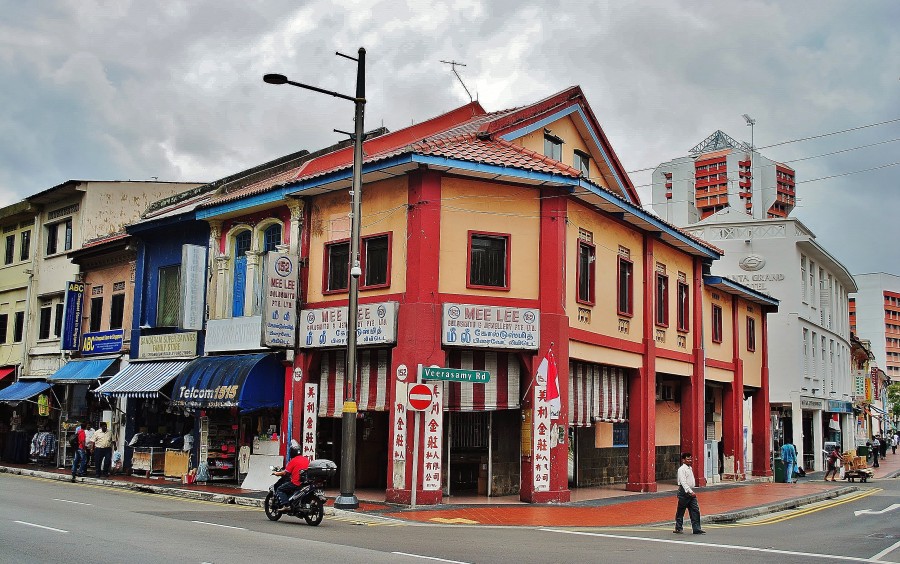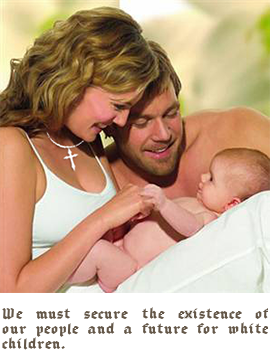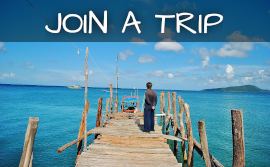Trip to Singapore 2004
All travel reports are translated electronically although minor improvements are sometimes made.
Trip to Singapore 2004
For me, Singapore was first and foremost another, very educational experience where in such a small area there is a lot to see from so many different parts of the world. Additionally, in addition to learning history and learning about the cultures of many nations, you can have great fun, play sports and spend time on a beautiful beach. For me personally, the country / city made huge impression.
My trip: Singapore town – Sentosa island.
Singapore city
(City description, architecture, monuments, Singapore law, river area, Chinatown, Little India, Merlion and other things).
So begins my beautiful and worth every moment, visit in Singapore. I reached the border early in the morning, before sunrise. This island is connected to Malaysia by means of a bridge and an embankment after which I got to Singapore. I got a stamp that gave me permission to stay for three months and then entered the island. Moving on the left, the first thing that caught my eye was the impeccable cleanliness of the route and then on the streets and very well maintained vegetation. When the bus stopped at the Queen Street terminal, after a few minutes a New Zealand boy came to me and said he had a hostel nearby and asked if I was looking for accommodation. I agreed because this time I had no plan. On the way we took one German and soon came to the place.
The ‘Sleeeping Sam’ Hostel’ was very well equipped and housed in the historical part of the Malayan city, Kampong Glam. All the houses were painted in different colors, all had shutters and tall palms rose on the street. But it was too dark to start sightseeing so I slept in the living room for a couple of hours to look forward to the morning. The next day I got a map in hand and went to explore Singapore. It was a very hot day but to withstand. My attention was paid to the cleanliness previously unparalleled in other parts of Asia and beautiful exotic vegetation. I started with Arab Street in which there was a magnificent Sultan mosque built in 1828 and the center of the Islamic community on the island. In Singapore there are about 80 mosques and this is the oldest. The mosque was built in the traditional Muslim way, with a huge dome on the roof and a minaret on each side of the world. It seems more interesting that the mosque is surrounded by palm trees and in the vicinity there are buildings in a completely different style.

The Sultan Mosque in Kampong Glam. Singapore.
Passing through Arab Street and then Muscat Street I reached the Beach Road on which was the monumental, great hospital named Sir Raffles` founder of Singapore. The whole building is surrounded by greenery with beautiful palm trees, which are everywhere here. In Singapore, you can see the name Raffles. There is a street, a town, a hospital, a hotel (one of the best) and of course his monument – as the book data says – stands where he first set foot on the new territory. Next to the hospital-on Fraser Street, there is another noteworthy building-Parkview Square Buliding but colloquially called it, “The Batman Building.” It is tall and dark and looks like one of the buildings of Gotham City with Batman. Also surrounded by palm trees, but I was interested in sculptures here. At the entrance stands a statue of a golden stork, going up to the flight and at the back there is a fountain and monuments of outstanding people. It is nice to have a Polish accent here as one of the monuments presents Fryderyk Chopin. Next to it was a gray and tall, The Gateway Building, which from some angles seemed thin and sharp as a piece of paper.
Going further towards Little India, passing through extra clean and green streets, I noticed that most of the streets have English names although there is a lot of Chinese and Malay and Muslim sound. I would say that street names are as culturally diverse as the cosmopolitan population of Singapore. The population is composed of 80% Chinese, 19% Indians and the rest are Europeans and refugees from Indonesia and Bangladesh. That is why in Singapore you can see mosque, church or Buddhist temple in different parts of the city and I feel like I was in another country. Walking further I just admired the surroundings and so I got to the inexpensive restaurant where I ate my first Singapore breakfast. Just as everywhere here, even cheap things mean purity and quality.
During my further walk I saw some important objects. The first was St. Andrew’s Cathedral, completed in the late 1930s and founded by Sir Stamford Raffles himself. The Cathedral served as an Anglican church and was one of the few Gothic buildings in the region. Unfortunately, it was hit by lightning several times and therefore had to be dismantled and then rebuilt in 1860. The cathedral was not to be overlooked was the Swiss hotel, which is the highest in Singapore.

Singapore’s exotic nature.
Next to the buildings was the office in the Padang district, where Singapore declared its independence in 1965. The building consists of two parts – old and new. The first one is built in a more traditional style and the new one with a big roof plate that looks like a UFO. After a while I got to the subway, which is the real pride of this country. It’s called MRT and it’s an abbreviation of Mass Rapid Transit. MRT is air conditioned, punctual, very modern and very clean. There are three main lines that reach all the major parts of the main island but I think there will be more soon. Inside was a crowd of people in suits, smelling even in this hot climate and on the walls of the queue were warnings what can not be done.
It is worth mentioning that Singapore is a city-state of law. Drug trafficking threatens death and it also appeared on the form before entering Singapore. In the city there are signs warning of unauthorized access, but there are many other prohibitions that made this place a joke and is known as a city of fine. For example, you can not import chewing gum. Failure to observe cleanliness, for example, throwing rubbish into the street or cigarette butts, smoking in air conditioned rooms, eating and drinking in the subway and buses – all these things in Singapore are high fines. I was reading this kind of warnings by the metro. Personally, I think this is a very good idea and should be everywhere.
I got off at Little India Station, another attraction of my interest, as it is the center of the Indian population in Singapore and thus gives you the opportunity to experience a different culture and cuisine – just a couple of metro stops from the last place. I was lucky because it was the great Indian festival of Diwali, and therefore the whole street was decorated with colorful flower wreaths and the Indians were preparing the main street – Serangoon Road, for fun and they started to spread their stalls. Indeed, the entire street looked quite different from the part of Singapore I had seen so far. There were many restaurants in traditional Indian food where chapati, naan and tea tasted deliciously. Also signs on the street and the names of shops were in Hindi, Bengali and Tamil languages, while Chinese and Malay were rare.

Little India. Singapore.
Although the whole area is called Little India, the people I met were not always from India. Many were from other sub-continent countries, such as Bangladesh or Pakistan, who also identified themselves with this particular place. In the evening it was more interesting because even though it was night, on Serangoon Road in Little India one could feel the true cultural mood of small India. The stalls were filled with things rather less needed but all were colorful, there were plenty of them and the vendors were encouraged to buy in their native language. It was Indian music, and in the pubs you could sit down with a cup of tea. If shopping was not enough, the Mustafa Center was close by where you could buy almost anything for an incredibly low price. There is also a mosque and several hindu temples that give a deeper look to the culture of India. But I did not go to any of them because I was more than impressed with what was happening on the street during Diwali.
The next day I spent some time in the area where I lived – Kampong Glam, and then I went to China Town. But before I got there, I reached the river and stood on the bridge at North Bridge Road. On the left I saw Boat Quay and on the right Clarke Quay. The Singapore River was always very important and was always the center of social and commercial life – even long before Raffles arrived. Boat Quay and Clarke Quay are very attractive. There are many restaurants, bars and cafes and all are illuminated after dark. There is no shortage of street vendors who have their stalls on the river for a warm climate and the river makes you want to just stay here, drink cold drinks and enjoy the surroundings. Both places are located on opposite sides of the river, so you can get here by boat or water taxi. Once these places were famous for the opium trade but today with the current rigorous law, this is a place to relax. Clarke Quay is made up of low-rise buildings with red roofs, and a large financial center with its skyscrapers is just behind it.
Next to there is Marina Bay, which is the real power of Singapore. It is an impressive financial center where the world’s largest banks are located. I think, as I will compare this wonderful city to Hong Kong, which is also the economic phenomenon of East Asia. Being in Singapore, the Merlion is worth mentioning, which is a symbol of the city that I have seen several times. Singapore is called the lion city because Merlion is half lion and half fish. Lion represents the roots of Singapore as a “lion city” and fish means close links with water. Upon returning to the river I went down the main street towards China Town. There is a street full of shops of all kinds and small restaurants from different parts of the world. Immediately I bought a shirt with the words “Singapore-city penalty”, which contained all prohibited things. Apart from such offenses as littering or importing chewing gum, there were also warnings that you could not spit and pee in the elevator. But more than the shops themselves, nicely incorporated into the old, low-rise buildings, I liked the Hindu temple of Sri Mariamman.

Singapore landscape. Traditional old buildings and skyscrapers in the background.
It is the oldest temple of its kind in Singapore, which is the center of Indian culture and tradition. It comes from the middle of the 19th century and is dedicated to the goddess Sri Mariamman, who is well known for treating diseases. As a curiosity I will add that the temple of the same name is found in many parts of Asia as the Indian community is spread throughout the world. The shape of this beautiful building is characteristic of southern India, which is a shrinking temple with many colorful statues of saints and statues of sacred cows. It looked amazing and very distinctive on the street.
I believe that anyone visiting Singapore and not yet in southern India should definitely see this temple because it gives a broader perspective on the religious architecture of the Indian subcontinent. After some time I reached China Town where as its name implies, it is a center of Chinese culture. I was always accompanied by beautiful nature, palm trees, stalls full of goods and beautiful weather. China Town is divided into several parts but I arrived straight to the MRT station of the same name and I think that from here I had the most convenient point to see this part of town. After spending a couple of hours here, it’s easy to see that Chinatown’s biggest attraction is just a small town with its many shops of all kinds. You can buy everything from plastic Buddha figures through Chinese ornaments, ending with dried fish and sea horses. I sat down at one of several pubs to drink jasmine tea and try the cooked rice with something I did not know. From here I had a good point to observe chewing rice and running in the rush of the Chinese. I have to say, unfortunately, that Singapore was not so clean although it did not bother me.
In addition to the previously described Sri Mariamman temple there are a few other temples to see and mosk but I was most interested in the overall impression and atmosphere of this place and that is what I recommend to travelers here. After a dusk between Pagoda Street and Smith Street, a great bazaar begins. Then it becomes brighter and colorful and it is the best time to try Chinese traditional brewed tea and try the Cantonese Duck. You can take a long walk and watch the Chinese street flooded.

Details on the Sri Mariamman Hindu Temple in Singapore.
Sentosa island
On my last day I went to Singapore’s Sentosa Island and south of the main island. Sentosa is an amusement park for locals and tourists. You can ride here on a sleigh, 600 meters, winding down and see the wonderful aquarium and dolphinarium. Sentosa can be reached by cable car, but when I reached the port I took a bus on the embankment connecting two islands. Too bad I did not pick up the queue because I could have better views but the ride on the embankment was nice too, the more I had the sea on both sides. This was the day I spent on the beach for swimming and exercise. The beach, palms, beautiful weather and all the perfect setting of this exotic place made me not want to move from there even to the dolphinarium. Of the most important things I saw only the great-thirty meter Merlion and it was quite an impressive view of half lion and half fish. The next day I got up at 5.30 in the morning and took the first MRT to the port. In this way, this time my stay in this magical place ended. Check-in was fast and as usual with no problem and when leaving Singapore passenger motorboat I once again saw the great Merlion. This time I was heading for Sumatra.
Summary
Singapore was beautiful and after a few days spent here I can only say that a few days would not be enough. The city has impressed me with its modernity, its cleanliness and its vast historical heritage and natural charms. Because of its history, Singapore is also the best place in this part of Asia to taste the cuisine of many parts of the world and get acquainted with the culture of ethnic groups living here. For me, Singapore was first and foremost another, very educational experience where in such a small area there is a lot to see from so many different parts of the world. Additionally, in addition to learning history and learning about the cultures of national minorities, you can have great fun, play sports and spend time on a beautiful beach. For me personally, the country / city made huge impression.

Sentosa island – the beach paradise of Singapore.

































